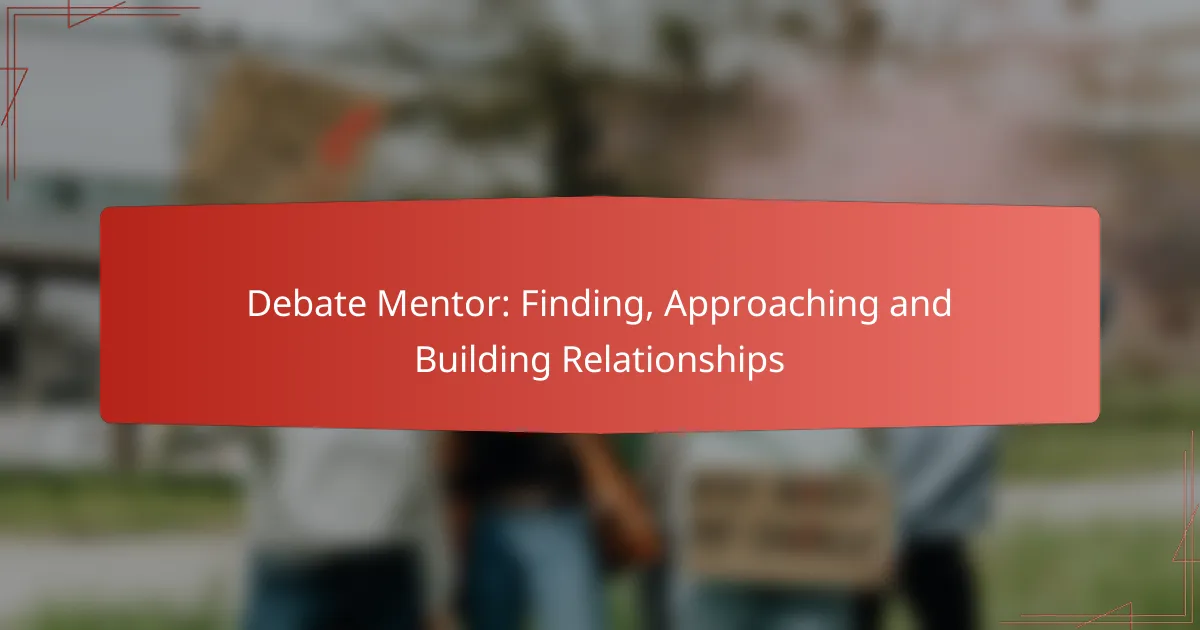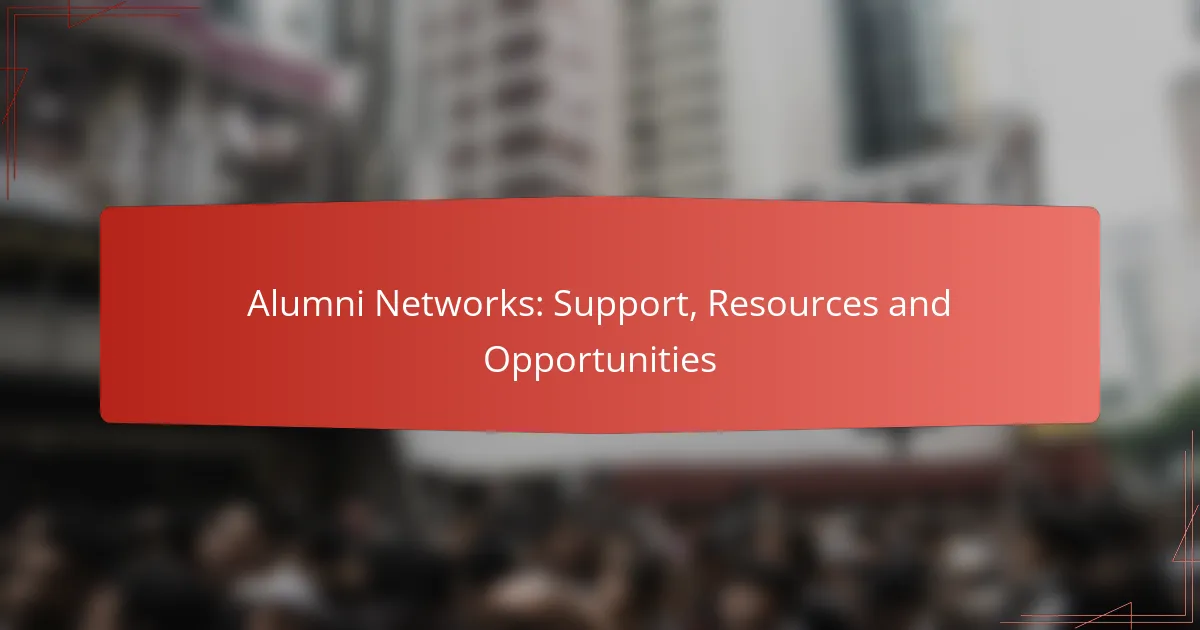A supportive community thrives on engagement, where members connect, share resources, and build trust. By actively participating, individuals contribute to a network that offers both emotional and practical assistance, fostering resilience. Access to online forums, local meetups, and educational materials further enhances collaboration, enabling members to pool their strengths and work towards shared goals for a more vibrant community.
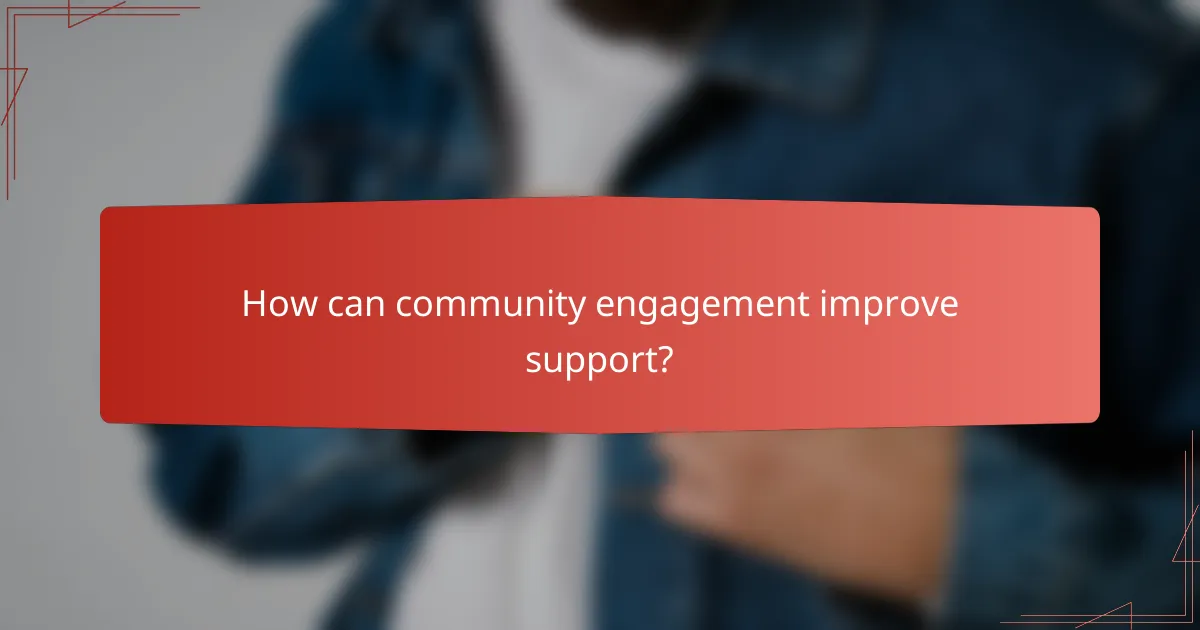
How can community engagement improve support?
Community engagement enhances support by fostering connections among members, facilitating resource sharing, and building trust. When individuals actively participate, they create a network that can provide emotional and practical assistance, leading to a more resilient community.
Increased interaction among members
Active engagement leads to more frequent interactions among community members, which can significantly enhance support systems. Regular meetings, forums, or online discussions encourage people to share experiences and advice, making it easier to seek help when needed.
Consider organizing monthly meetups or virtual gatherings to boost participation. These events can serve as platforms for sharing knowledge, discussing challenges, and celebrating successes, ultimately strengthening the community bond.
Enhanced resource sharing
Community engagement promotes the sharing of resources, which can include information, tools, or even financial support. When members are actively involved, they are more likely to offer and request resources that can aid in personal or collective goals.
For example, a community might create a shared online repository where members can access educational materials, job opportunities, or local services. This collaborative approach not only saves time but also maximizes the utility of available resources.
Stronger relationships and trust
Building relationships through community engagement fosters trust among members, which is crucial for effective support. When individuals feel connected, they are more willing to share their challenges and seek assistance without fear of judgment.
To cultivate trust, encourage open communication and transparency within the community. Initiatives like peer mentoring or buddy systems can help deepen relationships, ensuring that members feel supported and valued in their interactions.

What resources are available for community support?
Community support resources include online forums, local meetups, and educational materials that foster engagement and collaboration. These resources help individuals connect, share knowledge, and access tools that enhance their community involvement.
Online forums and discussion boards
Online forums and discussion boards provide a platform for individuals to engage in conversations, ask questions, and share experiences related to community support. Popular platforms like Reddit, Facebook Groups, and specialized community websites allow users to connect with like-minded individuals and access a wealth of information.
When participating in these forums, it’s essential to follow community guidelines and respect differing opinions. Engaging actively can lead to valuable insights and resources that may not be readily available elsewhere.
Local meetups and workshops
Local meetups and workshops offer face-to-face opportunities for community members to connect and collaborate. These events can range from informal gatherings at coffee shops to structured workshops hosted by local organizations, often focusing on specific topics or skills relevant to the community.
To find local events, check platforms like Meetup.com or community bulletin boards. Attending these gatherings can enhance networking opportunities and provide hands-on learning experiences that online resources may lack.
Educational materials and guides
Educational materials and guides serve as essential resources for individuals seeking to improve their community involvement. These can include articles, e-books, videos, and toolkits that cover various topics, from effective communication to project management.
Many organizations offer free or low-cost resources that can be accessed online. Look for reputable sources, such as nonprofit organizations or educational institutions, to ensure the information is accurate and beneficial. Utilizing these materials can significantly enhance your ability to contribute effectively to your community.
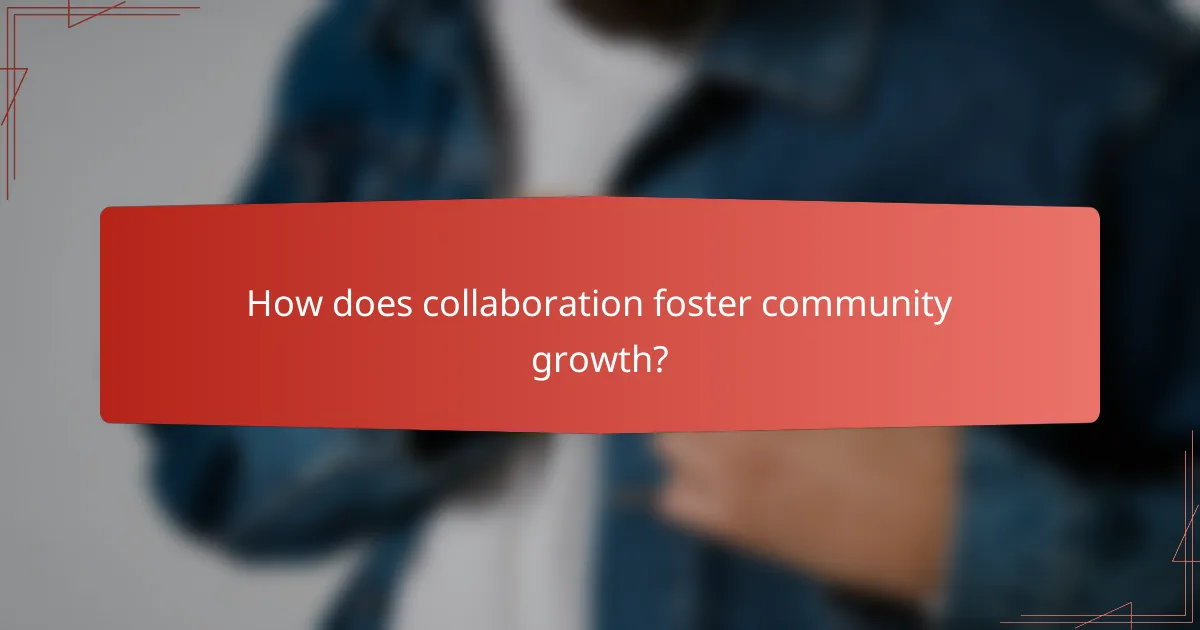
How does collaboration foster community growth?
Collaboration fosters community growth by encouraging shared goals, pooling resources, and enhancing relationships among members. When individuals work together, they can leverage each other’s strengths, leading to innovative solutions and a more vibrant community.
Joint projects and initiatives
Joint projects and initiatives allow community members to combine their skills and resources for a common purpose. These collaborations can take various forms, such as community gardens, local clean-up events, or educational workshops. By working together, participants not only achieve their objectives but also build stronger bonds with one another.
To initiate a joint project, start by identifying shared interests and goals among community members. Establish clear roles and responsibilities to ensure everyone contributes effectively. Regular check-ins can help maintain momentum and address any challenges that arise.
Shared knowledge and expertise
Sharing knowledge and expertise is crucial for community development. Members can host workshops, webinars, or informal meetups to exchange skills and insights. This not only enhances individual capabilities but also raises the overall competency of the community.
Consider creating a resource library or an online platform where members can share articles, tutorials, or best practices. Encourage participation by recognizing contributions and providing incentives for those who share valuable information.
Networking opportunities
Networking opportunities are essential for building connections within a community. Events like mixers, conferences, or social gatherings can facilitate introductions and foster relationships among members. These interactions often lead to collaborations and partnerships that benefit the entire community.
To maximize networking, create a welcoming environment where individuals feel comfortable sharing their experiences and goals. Follow up with participants after events to maintain connections and explore potential collaborations. Consider using social media groups or community forums to keep the conversation going and encourage ongoing engagement.
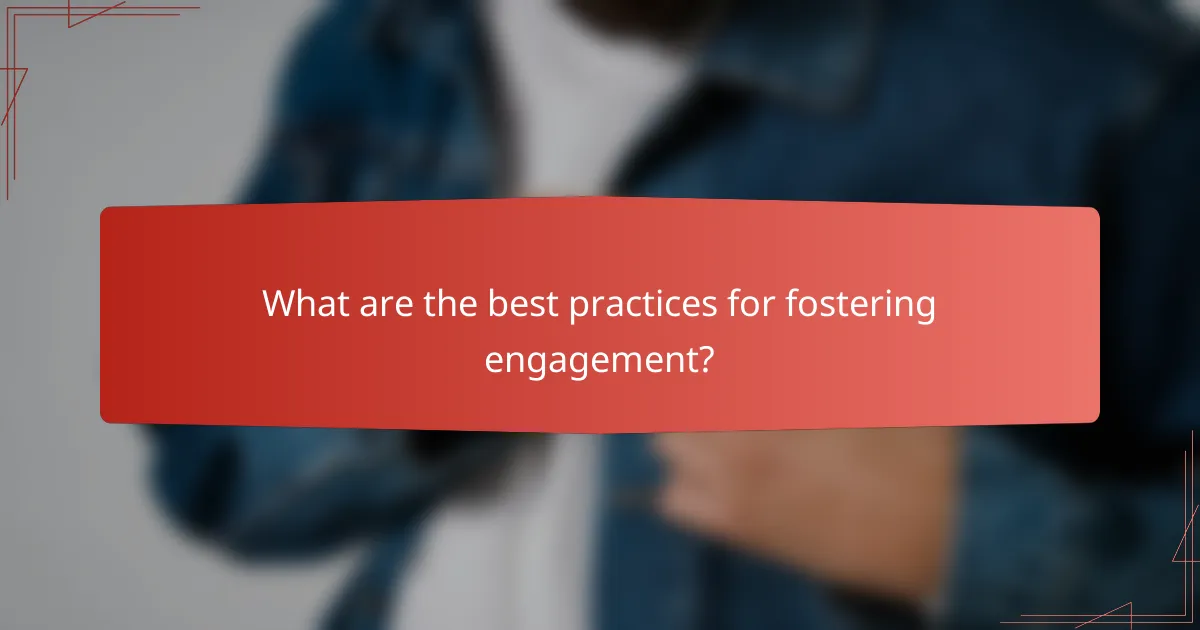
What are the best practices for fostering engagement?
Fostering engagement in a supportive community involves creating an environment that encourages participation and collaboration. Key practices include organizing regular events, providing incentives, and implementing effective feedback mechanisms.
Regular events and activities
Hosting regular events and activities is crucial for maintaining engagement within a community. These can range from weekly meetups to monthly workshops, allowing members to connect and collaborate. Consider varying the format to include both in-person and virtual options to accommodate different preferences.
Examples of effective events include skill-sharing sessions, networking opportunities, and themed discussions. Aim for a mix of social and educational activities to cater to diverse interests and encourage broader participation.
Incentives for participation
Incentives can significantly boost participation rates in community activities. Consider offering rewards such as discounts on services, exclusive content, or recognition within the community. These incentives can motivate members to engage more actively and contribute their skills and knowledge.
Additionally, creating a points system where members earn rewards for participation can foster a sense of competition and camaraderie. Ensure that the incentives are relevant and appealing to your community to maximize their effectiveness.
Feedback mechanisms
Implementing feedback mechanisms is essential for understanding community needs and improving engagement strategies. Regular surveys, suggestion boxes, or open forums can provide valuable insights into member preferences and experiences. This feedback helps tailor activities and initiatives to better serve the community.
Encourage open communication and ensure that members feel their opinions are valued. Act on feedback where possible, as this demonstrates responsiveness and commitment to continuous improvement, further enhancing community engagement.
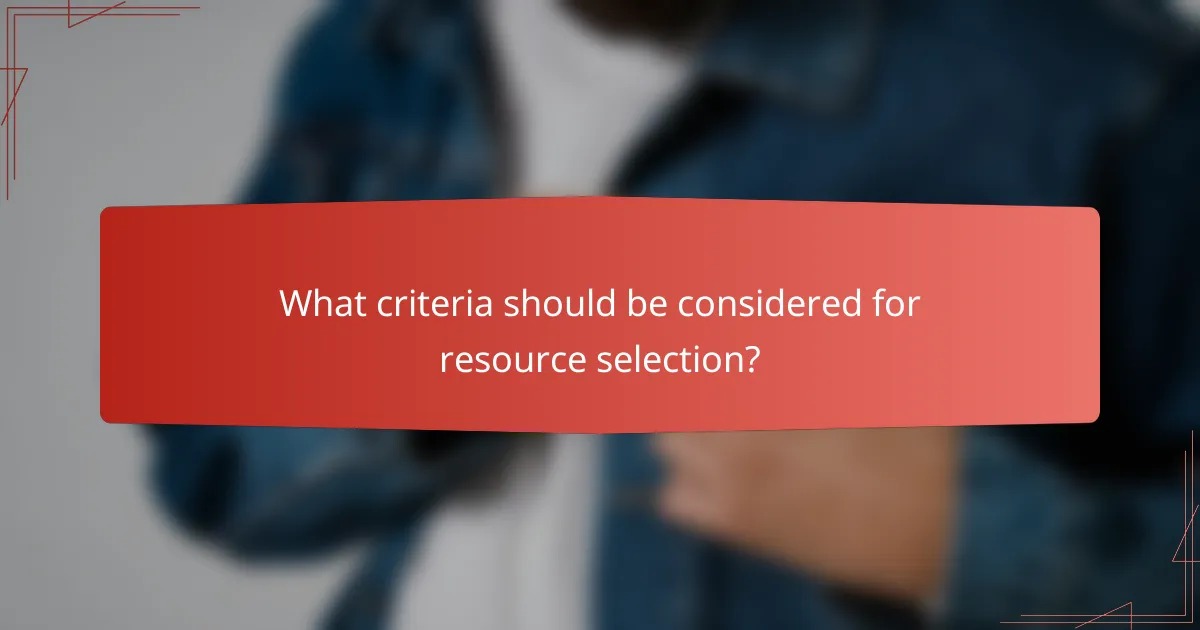
What criteria should be considered for resource selection?
When selecting resources for a supportive community, it is essential to consider their relevance to community needs, accessibility, and ease of use. These criteria ensure that the resources effectively address the specific challenges and preferences of community members.
Relevance to community needs
Resources must align with the specific needs and interests of the community they serve. Conducting surveys or focus groups can help identify these needs, ensuring that selected resources are not only useful but also engaging for members.
For example, if a community is focused on mental health support, resources like workshops, counseling services, or informational materials on coping strategies would be highly relevant. Prioritize resources that directly address the most pressing issues faced by the community.
Accessibility and ease of use
Accessibility involves ensuring that resources are available to all community members, regardless of their background or abilities. This includes considering language options, physical access, and digital formats. For instance, providing materials in multiple languages or formats (like audio or braille) can significantly enhance accessibility.
Ease of use is equally important; resources should be straightforward to navigate and understand. Clear instructions, user-friendly interfaces, and intuitive layouts can help ensure that community members can quickly find and utilize the resources they need. Regular feedback from users can help identify areas for improvement in accessibility and usability.

